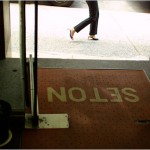In Time magazine’s 1961 article Sonny, An Introduction, John Skow gave the following account of J.D. Salinger’s meeting with Ernest Hemingway during the Second World War: “In France, Staff Sergeant Salinger had an audience with War Correspondent Ernest Hemingway, who read Salinger’s work and, possibly in appreciation of it (‘Jesus, he has a hell of a talent’), took out his Luger and shot the head off a chicken.”
In the years that followed, almost every Salinger critic has reported some version of this story. But as the half-century anniversary of the infamous chicken myth draws near, it is time, at last, to set the record straight.
Unfortunately, the myth has led scholars to ignore the fact that meeting Hemingway during the war is the most overlooked event in Salinger’s formation as a writer. Considering the meeting involves two of the most influential writers of the 20th century, the oversight is difficult to comprehend. Salinger died in January at age 91; Hemingway, who died in 1961, was born 111 years ago last week (July 21).
By all accounts, Salinger first met Hemingway at the Hotel Ritz after the liberation of Paris in 1944. In a letter dated a couple of weeks later, on Sept. 4, 1944, Salinger tells his editor, Whit Burnett of Story Magazine, that he met Hemingway and found him soft in comparison to the hard, tough demeanour of his prose. Salinger also says Hemingway was generous, friendly and unimpressed by his own reputation.
Continue reading “When Papa met Salinger by Brad McDuffie”



